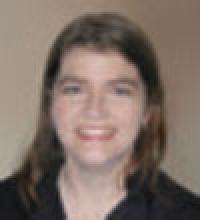Davis has taken additional steps to improve patient access. After having a closed panel for 2 years, she hired an NP to help her work down the backlog and see more patients. Now she’s able to accommodate 2 new patients every workday. “I love meeting new people and would like to accept more new patients,” says Davis. But her panel size—now at 2700—is approaching the point where she may have to close it again.
While some FPs are frustrated by the focus of reform efforts, Davis sees the proposed legislation as an important first step. Another step in the right direction would be to institute reimbursement for electronic patient interactions, she adds, such as those supported by the patient portal Heartland is about to launch. Another key step: Require public and private health plans alike to pay higher fees for after-hours care.
“Plumbers get paid extra for working on Sundays,” Davis points out. “Why shouldn’t we?”
KATE ROWLAND, MD, an FP at Advocate Illinois Masonic Family Medicine Residency in Chicago, says that the residency clinic where she works has taken another step toward increasing access: The group has instituted formal walk-in hours. Between 8 and 10 am, established patients with acute care needs can come in without an appointment and be guaranteed that they’ll be seen by noon.
Kate Rowland, MD, Advocate Illinois Masonic Family Medicine Residency, Chicago
The new approach—a modified version of same-day scheduling—has been tremendously successful, she says, and relieved a good deal of pressure. Still, “We see some 3000 patients per month, and have just gotten busier and busier.”
What else can be done?
Rowland favors taking small steps, 1 at a time: extending clinic hours (it is now open until 7 pm 2 evenings a week and from 8 am until noon on Saturdays); reallocating physician duties, as needed; and establishing classes for patients with similar issues, such as asthma and diabetes, among other innovations.
She maintains, however, that the US health system is devoted to curing disease and prolonging life rather than on keeping the population healthy. A major refocus is needed for lasting change to occur, Rowland says. But will governmental policy changes and physician culture shift in the right direction?
“Medicine is incredibly stagnant,” the 31-year-old Rowland says. “I wonder whether we’ll still have the same chaotic system when I’m ready to retire.”


